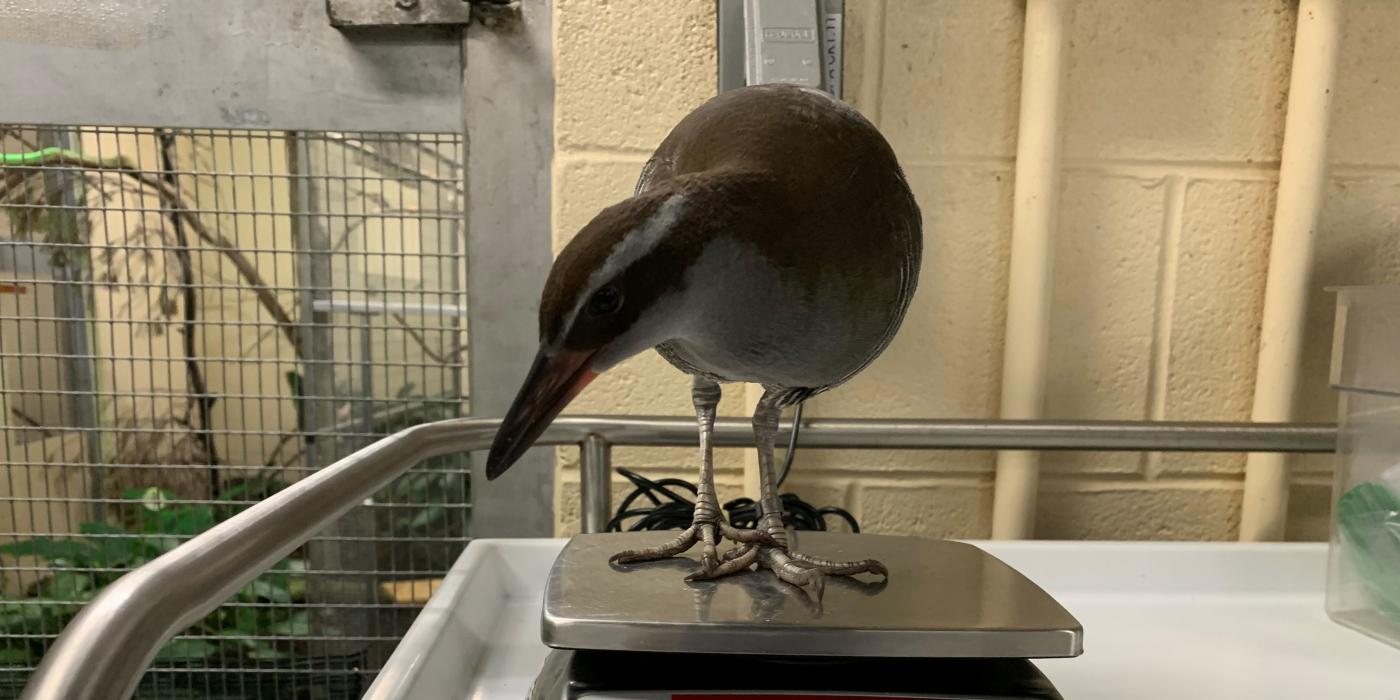New Kori Bustard Research Sheds Light On Breeding Behaviors
The Kori bustard is bird native to the eastern and southern grasslands of Africa. This species weighs in at 40 pounds, making them the world's heaviest flying bird. Unfortunately, it is also considered near threatened by the International Union for Conservation of Nature. From 1997 to 2008, the Smithsonian's National Zoo implemented the best practices in breeding husbandry. As a result, more than 40 chicks have hatched here!
The majority of chicks hatched at the Zoo were relocated to other North American zoos as part of the Association of Zoos and Aquariums' Species Survival Plan for kori bustards. The few that remain are a part of ongoing behavior studies. Before the National Zoo began a behavior watch in 1999, little was known about kori bustard sexual maturation in human care. By studying the behaviors of our own flock, we are better understanding kori development.
To study kori behavior, we observed our sub-adult flock as they reached adulthood and performed mating behaviors. In the wild, a male kori reaches sexual maturity around five years of age. At that time, he will display—toss his head, gulp air, and make booming calls—to impress potential mates. Last breeding season, we observed a primitive attempt these displays in our 6-year-old male, Maliki. This breeding season, however, Maliki performed booming displays with great frequency—we counted more than 300 between June and September!
That seems like a lot until you compare him to our mature kori bustard, Noname. He's 22 years old and averages 2,000 booms over a five month period. As Maliki matures, we'll be closely monitoring his calls to see if he comes close to Noname's record in subsequent breeding seasons. Interestingly, volunteers observed Maliki listening to Noname's booms from a separate, non-visible enclosure before he began booming himself. We're interested to see if this year Maliki booms concurrently with Noname all season.
In the coming seasons, we hope to see Maliki performing additional breeding behaviors, such as more frequent booming, chasing females or copulation attempts.
Meanwhile, we're also observing our 7-year-old females, Tatu and Chasi. Of the two, Tatu has showed more maturation. Chasi has yet to lay an egg, but Tatu laid one infertile egg last year and three infertile eggs this year. Tatu also has performed nest building behaviors and incubated dummy eggs.
Curator Sara Hallager has considered an interesting theory as to why Tatu is displaying more maturation than Chasi. According to the Kori Bustard Species Survival Plan, dominant females can suppress breeding behaviors of other females in a flock. Hallager refers to Tatu's personality as more "challenging" than Chasi's, so it is possible that Tatu could be the dominant female. It's too early in the study to support or oppose this theory, but we are continuing to monitor Tatu and Chasi closely. We anticipate that Tatu will lay more eggs, and hopefully Chasi will lay her first egg!
We are excited to learn and collect information about kori behavior and development from our flock. We hope that all the husbandry data we gather and share with our colleagues enables all institutions that care for these beautiful birds to help save the species.
Related Species:

